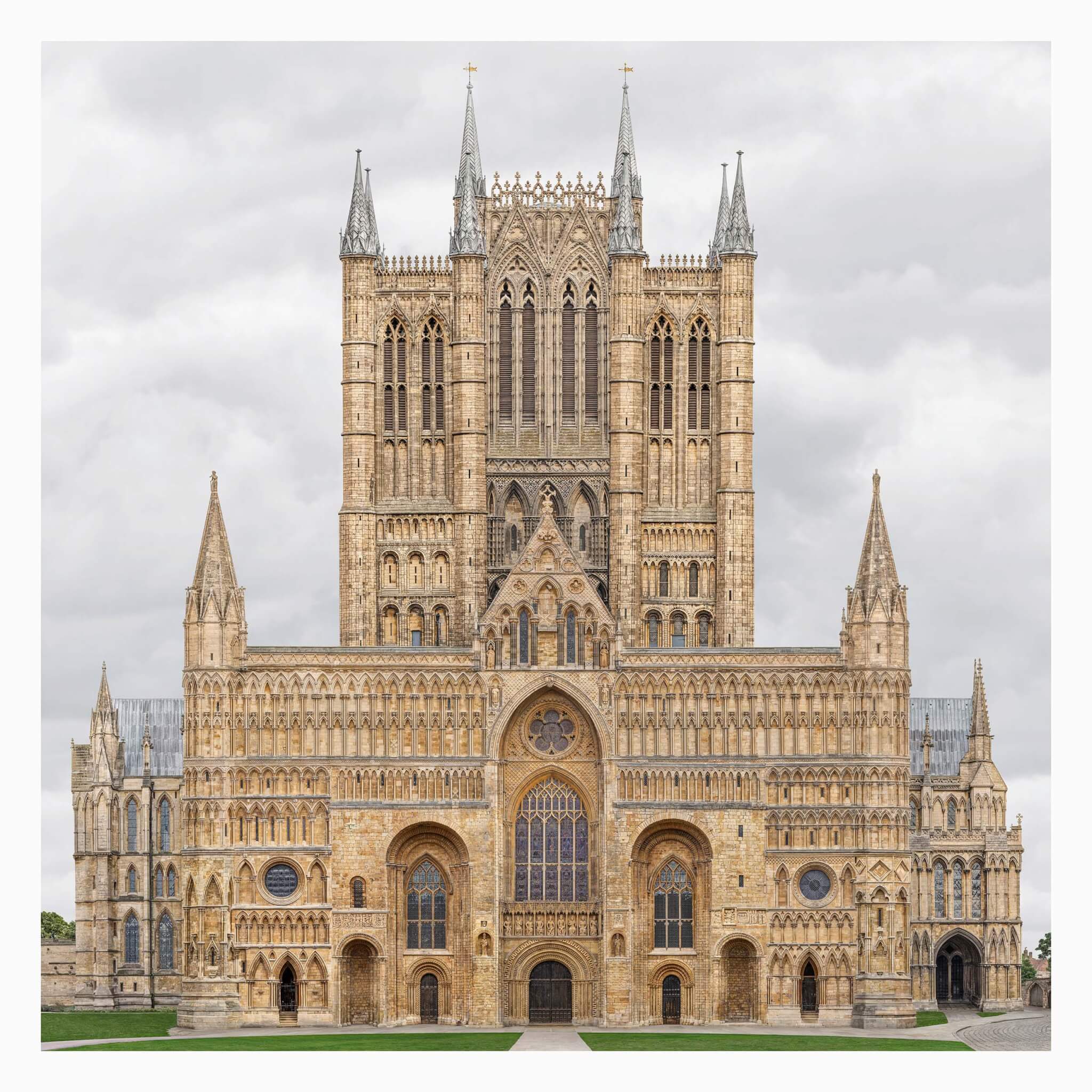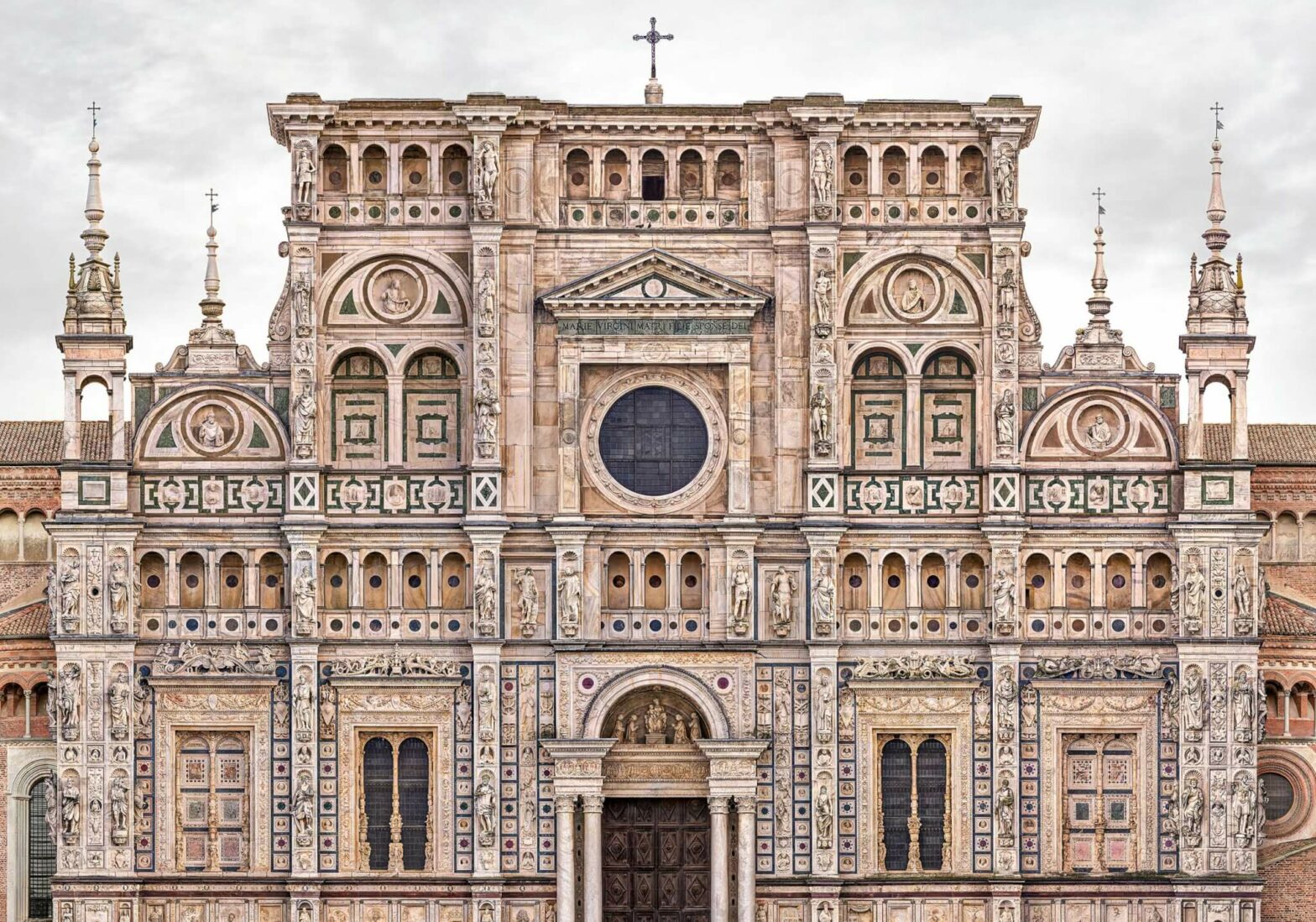[ad_1]
Markus Brunetti: Facades III
Yossi Milo Gallery
245 Tenth Avenue
New York
Through May 6
For nearly two decades, artist Markus Brunetti has embarked on the near-Sisyphean task of documenting historic cathedrals, churches, monasteries, and synagogues, throughout Europe. His medium of choice is photography, and, in collaboration with his wife and creative partner Betty Schöner, he documents buildings at a granular level: Each subject is photographed in thousands of shots, one square meter at a time, and then is stitched together in post-production to create monumentally scaled canvases of staggering detail. FACADES III, on view at Yossi Milo Gallery, is the latest installation of this grand project. The images’ meticulous execution is impressive.
In this era of mass—and instant—image production, Brunetti’s project stands out for the relatively glacial pace of the work. The title of each piece indicates the span of time between the first photograph and the final product. For example, Lincoln, The Cathedral Church of St. Mary, on display at Yossi Milo, was scaffolded for approximately three decades, so, as the restoration commenced, the duo photographed only partial areas of the facade over a period of several years.


That same consideration extends to the treatment of seasons, as the stitching together of those many images requires consistency in both lighting, surrounding foliage, and weather conditions. One example is Rocca di Calascio, Santa Maria della Pieta in Abruzzo. “We visited it years ago during spring, when the surrounding meadows were bright green and the mountains in the background were snowless,” Brunetti told AN. “Combined with the slightly pink color of the church’s facade, it was too picturesque, almost like a postcard. To create a coherent overall image and achieve the aesthetic we sought, we had to wait nearly a year for the end of winter before we could return to resume photographing the church.”
Eschewing the singular image favored by the Bechers, another German couple who worked together, the technical challenge of executing architectural photography is equally matched, if not more so, by the editing process in which those thousands of individual images are stitched into a seamless image. This extreme level of detail elevates the textural quality of the duo’s subjects and delivers prints of visual complexity and nuance. “The process of digitally assembling the individual shots is the most time-consuming part of our practice, as we cannot use any automated processes, but have to assemble everything manually, which can take a period of several months,” continued Brunetti. “This is the symbiosis between photography and painting—creating an image by layering and arranging according to our idealized vision. After we’ve made an image that is satisfactory, we’ll print the work in the larger scale and examine it for any faults or discrepancies. We’ll then return to the drawing board to make any necessary changes.”

The result, for the viewer, is transportive. Patinated ceramic pan tiles, masonry detailing, colored marble, gargoyles and all the nooks and crannies—sometimes containing pigeons or creeping moss—of these cultural reliquaries are rendered lifelike, all the more so through the encompassing collage perspectives, which offer views that are not possible in reality.

Seen in person, the large prints are ambitious, visionary, and sure to dazzle.
Matthew Marani, studying city and regional planning at Pratt Institute, writes about architecture and urban design.
[ad_2]
